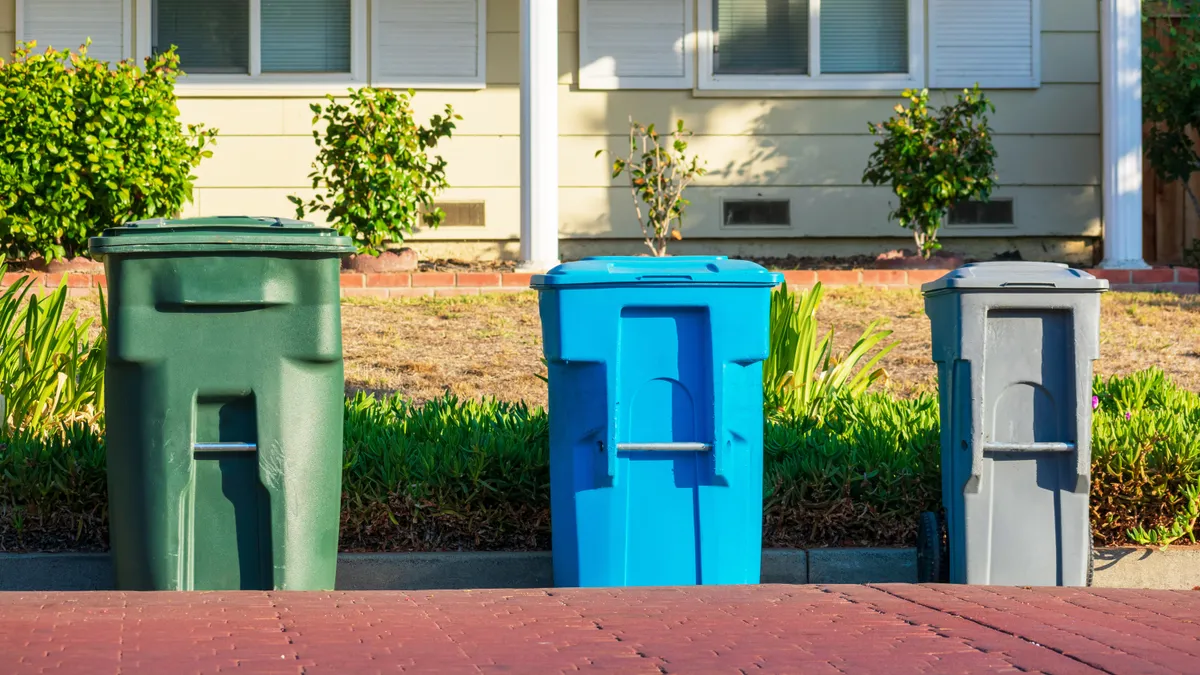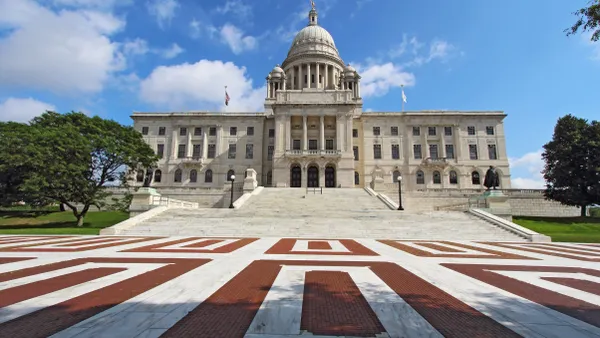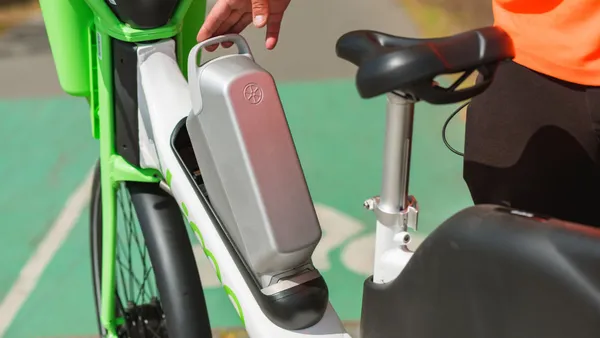UPDATE: June 15, 2022: The U.S. EPA could open the application process for its Solid Waste Infrastructure for Recycling (SWIFR) grant program and recycling education and outreach grant program by the end of September, the agency said during an informational webinar this week. Details on how long the grant applications will remain open are still up in the air, pending stakeholder feedback, but it could be between 30 and 90 days once the process is announced. After receiving the applications, the EPA aims to release the funding by spring 2023.
Dive Brief:
- The U.S. EPA is asking for input on how to build its new waste and recycling programs and grants funded by the Infrastructure Investment and Jobs Act. It will host feedback sessions for the waste and recycling grant programs later this month and will solicit written comments through mid-July.
- When it passed in November 2021, the infrastructure bill allocated $375 million to developing programs for recycling infrastructure and recycling education as well as battery collection and battery labeling efforts. These listening sessions and requests for information are the next steps in the EPA’s process to allocate the funding.
- Recycling stakeholders are calling for the grantmaking process to move quickly, but they also say their input is key to make sure the EPA’s new programs support and reflect the complexities of the country’s current recycling systems.
Dive Insight:
The infrastructure funding is one of the biggest developments in recycling so far on a federal level this year, as numerous recycling-related bills in Congress have been introduced, but few have moved forward. The EPA calls the funding package its “largest investment in recycling in 30 years.”
Though stakeholders see the infrastructure funding as a sign that the Biden administration values making recycling and waste improvements, they say the success of the programs will rely on how efficiently and effectively the EPA rolls out the grant process. EPA is asking for feedback on “resources, opportunities, and barriers related to waste prevention, and reuse and recycling,” the agency said in an email.
The public comment period is an important way to make sure the EPA gets it right, said Leo Raudys, CEO of battery recycling organization Call2Recycle. “Recyclers, processors, manufacturers — anybody who has real-world experience that feels like they have solid technical information to help inform better policies — can give input and help build better programming,” he said.
Industry stakeholders are also hoping the EPA’s information-gathering period moves quickly, since it could be several years before any recycling-related infrastructure funding can take full effect. Some have been waiting for news on when to apply for certain grants since 2020, when Congress passed the Save Our Seas 2.0 Act. The act largely did not have funding attached to it until President Biden signed the infrastructure law in November 2021, with one exception being the launch of the SWIFR pilot grant program. That grant program, authorized by Save Our Seas 2.0, is taking comments through July 25, and the EPA will host a live feedback session for it on June 14.
For the IIJA-funded programs, David Biderman, CEO and executive director of the Solid Waste Association of North America, said the organization “is pleased that this outreach is taking place and is encouraging EPA to review the feedback quickly this summer so that the application process can start in the fall.”
The infrastructure grant program will provide $275 million to states, territories and tribal governments for projects like municipal recycling program improvements and upgrades to local waste management systems. The program is expected to require grant applicants to choose projects that will support disadvantaged communities and reduce plastic waste.
The EPA is also building recycling education and outreach initiatives meant to improve residential recycling. This segment of funding, which comes from the infrastructure bill’s inclusion of the RECYCLE Act, authorizes up to $15 million per year in recycling education grants through 2026. States, tribal governments, local governments, public-private partnerships and nonprofits will be able to apply for this funding.
Under the RECYCLE Act provisions, the EPA must also develop a toolkit with suggestions for reducing contamination and increasing recycling participation. The Institute of Scrap Recycling Industries, which helped write the RECYCLE Act, has said input from recycling stakeholders will be essential for creating a useful guide. The EPA is soliciting comments on these efforts through July 25 and will host a live feedback session on June 14.
The infrastructure law also allocates money for battery recycling, with $10 million to develop recycling best practices and $15 million to develop voluntary labeling guidelines by Sept. 30, 2026. The programs are meant to reduce instances where batteries are improperly disposed to avoid fires at landfills and MRFs and more effectively recycle batteries into new products, the EPA said.
Raudys said Call2Recycle has worked with the EPA to help the agency understand the unique challenges of collecting and recycling batteries and how battery recycling campaigns will need to work differently than campaigns to recycle curbside materials. Stakeholders have until July 11 to submit comments on this provision and can attend a feedback session on June 15.














